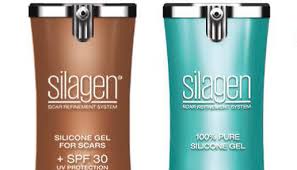Scars are the result of all elective aesthetic incisions or any method that wounds the skin’s surface. How well any scar will heal depends on a wide variety of factors from its anatomic location, skin thickness, natural degree of pigmentation, and the method that was used to both make the skin injury as well as close it. As a result the final appearance of scars can be variable and not always completely predictable.
While the patient has no control over how the scar has been created, they do have some influence on its healing and potential aesthetic outcome through postoperative scar care. The most visible element of scar care are topical management strategies. While various high-tech scar treatments exist, such as fractional laser and platelet-rich plasma injections, their cost and unknown effectiveness prohibits many patients from embarking on their use.
What almost all patients will use and will readily do so are topical scar creams. These are tangible products that patients can readily feel and can physically apply. While a number of topical scar creams are available the foundation for all of them is silicone gel. Silicone is the gold standard of scar therapy and its effects have been studied for decades. Its exact mechanism of action is far from being completely elucidated but it is believed to provide a barrier to evaporative water loss that is initially lost as a result of the injury. The silicone through its polymerized chain molecules creates an occlusive barrier that helps increase the hydration of the stratum corneum (top layer of the skin) which deregulates fibroblasts and subsequent collagen production…leading to softer and flatter scars. It also has the side benefit that such hydration also reduces itching and discomfort.
The use of topical silicone is well accepted by patients and studies have shown that gels are just as effective as sheeting and induces far greater compliance. As a result patient readily ask about and for topical scar gel recommendations. As silicone scar gel products have matured it is most commonly combined with various SPF sunscreen ingredients (zinc oxide) to help protect from a sun-induced radiation injury in the early phases of healing. This is a biologically helpful and logical evolution of topical scar gels and one that all patients know to help protect their healing scars.

My recommendations are that the optimal time for application is between three weeks and three months after surgery. The incision has to be healed enough so that the epithelium is closed which takes a few weeks. Applying silicone gel before that time is not helpful. Conversely once three months of healing time as passed the protective effect of the stratum corneum has been restored and the benefits of continued use diminish considerably. For patients with persistent excessive scars or with a known history of problematic scar formation, its use can be extended out to six months after surgery.

Patients that employ topical scar gels in a consistent fashion in the recommended time period will get the best scar results. And regardless of their outcome they know they have done the most that could be done to optimize their scar’s appearance during the critical healing period.
Dr. Barry Eppley
Indianapolis Indiana


